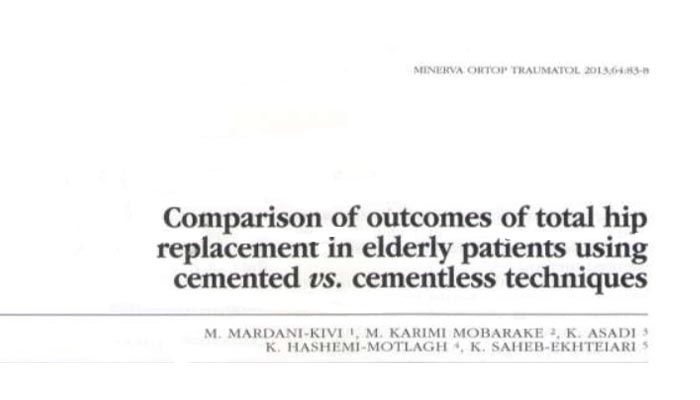- تاریخ درج : ۱۱ اردیبهشت ۱۳۹۶
- تعداد بازدید: 2954
- نویسنده : dr.mohsen mardani-kivi
-

Abstract
Aim: We evaluated the functional results and complications of total hip replacement with cemented (96 patients) and cementless (113 patients) techniques in patients over 65 years.
Methods: In this cross-sectional study, all osteoarthritic patients aged 65 years or older who had been hospitalized for total hip replacement were evaluated for eligibility. “Harris hip score” was used to assess the functional consequences. Early complications such as thrombophlebitis of lower limbs, dislocation, hematoma and infection) and late complications such as (aseptic loosening, dislocation, and revision) were also compared between the two groups.
Results: The mean follow-up was 5 years and 2 months (range 51 to 82 months). The overall rate of early complications was 3.8% (8 cases) that five patients were in the cemented group (one with hematoma, one with infection, two with thrombophlebitis, and one with early dislocations) and three patients in cementless group (one with thrombophlebitis, and two with early dislocations). Late complications were observed in two patients (one with loosening in cemented group and one with dislocation in cementless group). Harris hip score at final follow-up in cemented and cementless groups were 84.01±4.71 and 85±5.02 (P=0.13) respectively.
Conclusion: Cementless hip replacement can have a satisfactory functional performance as cemented hip replacement procedure in elderly patients over 65 years.
-